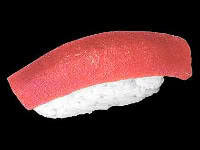Hydrokinetics – Different Approaches


In fact, this was my initially negative reaction to the concept of the HyPEG – if you’re taking kinetic energy from the river, isn’t the velocity of the water is far more important than the mass? The answer: Sort of. More relevant: The power of a rotating structure is its speed times its torque. And yes, in the HyPEG, that speed won’t be large, but the torque will be enormous. When the inventor quoted the figure (30 million foot-pounds), that shut me up really fast.
There are numerous other ways to overcome this challenge, however, and one of them is depicted in this video on a technology called vortex-induced velocity, which is under development at the University of Michigan. Note that things that swim do so by taking advantage of the density of the fluid, and using their bodies or tails to create temporary vortices of fast-moving water.
Though there are no cost figures mentioned in the video, to me, this sounds like an expensive solution. I should also note that it seems like a danger to aquatic life – a “sushi-maker” as they say — to describe submerged devices that that tend to chop up fish. Having said that, I have to applaud the creativity. Hey – may the best technology win.
